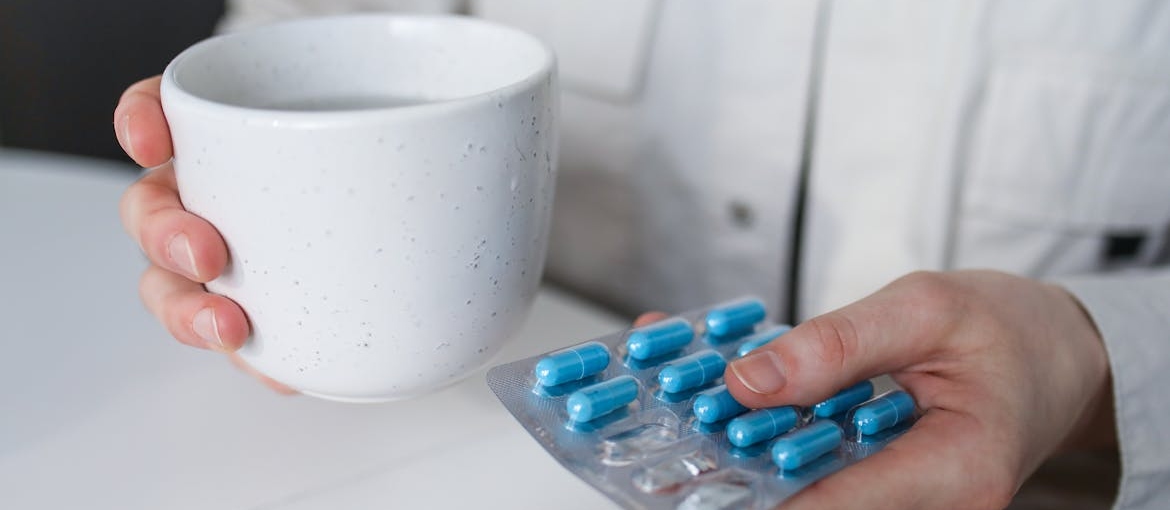Many people feel lost when old habits fade and new ones take their place. You might notice a pull toward a new routine that feels comforting at first but soon grows into something harder to control. This shift is known as transfer addiction, and it can appear even when you feel proud of your progress. You are not alone in this. Recovery brings many changes, and it’s normal to look for something that helps you cope. Still, some patterns can slowly take over your days. You deserve support that makes you feel steady and safe each day. Harmony Ridge Recovery Center WV can help you understand these patterns and build healthier tools. Small steps forward can protect your progress and keep you moving toward a life that feels more stable.
What Transfer Addiction Means in Recovery
Transfer addiction shows up when a new habit starts filling the space that an old one left behind. You might notice it when stress feels high and you reach for something that gives quick comfort. This shift can confuse you because it may feel safer at first, but it slowly takes control in similar ways.

You’re not failing when this happens. You’re reacting to pressure that needs care, not blame. Treatment centers such as West Virginia heroin rehab understand how fast these patterns form during recovery. With the right support, you can learn what pulls you toward certain habits, what helps you feel grounded, and what steps keep you moving forward without getting stuck in another cycle.
Psychological and Biological Causes Behind Transfer Addiction
Transfer addiction can appear when your mind searches for relief during stress. Emotional pain, fear, or old coping habits can push you toward new routines that feel soothing. Your brain responds to comfort even if it creates problems later. Here are some common factors that can push you toward new habits when stress feels too heavy:
- Stress response: It pushes quick choices.
- Reward seeking: It creates strong urges.
- Low mood: It increases escape behaviors.
- Anxiety: It raises the need for relief.
- Impulse strain: It weakens decision-making.
- Trauma history: It shapes coping patterns.
Everyday Behaviors That Can Turn Into Transfer Addiction
Daily habits can slip into risky territory when they start taking more space in your life. Exercise might begin as a positive routine but become something you rely on to handle stress. Shopping can shift from a simple treat to something you use to lift your mood.
Food or sugar may help you calm anxiety for a moment. Work, gaming, or social media can turn into ways to avoid hard feelings. These changes don’t make you weak. They show that stress is building and needs attention. When you notice these shifts early, you have the chance to break the pattern before it grows stronger and harder to manage. Small corrections now protect you later.

Treatment Options for Transfer Addiction
You deserve support that matches your needs, especially when new habits start taking control. Treatment gives you tools that help you slow down, understand your reactions, and build healthier routines. These options create space for you to breathe and make safer choices. Each path works in a different way, but all of them focus on helping you feel more grounded. With steady guidance, you can break patterns that hold you back and move toward real stability.
Therapies That Target Compulsive Patterns
Therapy helps you look at the thoughts and feelings that shape your behavior. You learn what triggers certain habits and why some routines become hard to manage. A therapist guides you through skills that help you slow down and choose healthier actions. This work feels easier when you have a plan that fits your needs and doesn’t overwhelm you.
A CBT treatment plan for substance abuse teaches you how to question automatic reactions and replace them with clear, steady steps. You start noticing what pulls you toward unhealthy habits and what helps you stay balanced. These changes happen little by little, giving you room to grow without pressure.

How Rehab Programs Address Transfer Addiction Directly
Rehab gives you structured support when new habits become too strong to control on your own. You get a team that understands the stress you’re carrying and how fast patterns can shift. They help you look at your daily routine, your triggers, and the emotions that sit beneath the surface.
Programs in rehabs in Parkersburg WV offer guidance that fits your pace, not a perfect plan you must follow right away. You learn tools that help you handle cravings, manage stress, and build healthier habits. This approach helps you stay grounded and gives you the strength to step away from behaviors that create more harm.
Support Groups for Ongoing Stability
Support groups give you people who understand your struggles without judgment. You hear real stories that help you feel less alone and more hopeful. These groups provide a safe place to talk about stress, triggers, and progress. These points show what you can gain when you stay connected to a supportive group:
- Shared stories: They help you feel understood.
- Routine meetings: They keep you accountable.
- Open talk: It gives space to speak freely.
- Positive support: It lifts your confidence.
- Coping ideas: They make tough days easier.
- Community strength: It reminds you you’re not alone.
Medication Options for Underlying Mental Health Needs
Some people deal with deeper mental health needs that make transfer addiction harder to manage. Medication can help ease these symptoms, so you feel steadier while you work on healthier habits. A provider checks how your body responds and makes changes slowly and safely.
Programs that offer dual diagnosis treatment in West Virginia treat both emotional struggles and addictive patterns at the same time. This support helps you think more clearly, handle stress with less panic, and stay focused on recovery. Medication isn’t the whole answer, but it can make the rest of your work feel possible.

Evidence-Based Ways to Prevent Transfer Addiction
Prevention works best when you build simple habits that keep you aware of how you feel and what you reach for each day. You gain more control when you understand your triggers and use tools that make stress easier to manage. These steps protect your progress and help you stay balanced. With steady routines, healthy support, and honest reflection, you can lower your risk and keep your recovery strong.
Healthy Routines That Support Balance
Healthy routines build the structure you need to feel safe and steady. These simple habits can keep your days steady and lower the risk of falling into new patterns:
- Morning rhythm: It sets a steady tone.
- Rest hours: They protect your mood.
- Breaks: They help you reset.
- Movement: It lowers stress safely.
- Support calls: They keep you connected.
- Evening routine: It calms your mind.
Tracking Habits Before They Become Compulsive
Tracking your habits helps you catch patterns early. You might notice that certain activities take more time or feel harder to control. When you write these moments down, you can see what triggers them and how your mood plays a role. This awareness lowers the chance of slipping into routines that become too strong.
You also learn what helps you calm down without feeding the habit. Tracking doesn’t need to be perfect. A few notes each day give you enough information to see what’s changing. These small steps help you stay honest with yourself and take action before things grow heavier. The earlier you catch a shift, the easier it is to correct.
Building Strong Emotional Regulation Skills
Strong emotional skills make recovery feel safer because they give you tools for hard moments. You learn how to slow down, notice what your body feels, and choose a calmer response. These skills help you stop relying on habits that bring quick comfort but long-term stress. Techniques like art therapy rehabilitation give you a healthy outlet for feelings that otherwise pile up.
You release pressure without harming yourself. The more you practice these tools, the easier it becomes to manage conflict, fear, or frustration. Emotional regulation doesn’t remove stress, but it makes it less overwhelming. This helps you stay steady and avoid new patterns that can take over your days.

How Community Support Helps You Stay Grounded
Community support makes recovery less isolating. You feel stronger when you’re surrounded by people who understand your struggles and want to help you succeed. These connections make it easier to talk about triggers, setbacks, or changes you notice in yourself. You learn from others who’ve faced similar moments and found ways to move forward.
Programs such as alcohol rehab for professionals offer structure and teamwork that help you stay steady. Being part of a supportive community gives you accountability, comfort, and real guidance. These relationships help you stay grounded, especially on stressful days. Recovery becomes easier when you know you don’t have to handle everything alone.
When It’s Time to Seek Professional Help
Some signs tell you it’s the right moment to reach out for help. You might see a new habit growing too fast or notice that stopping it feels hard. You may feel ashamed, anxious, or secretive about it. These are signs that support can help you feel steady again.
A therapist or treatment program can guide you through the thoughts and stress that keep the habit alive. Options like PEIA insurance rehab coverage can make care easier to access. You deserve support that meets you where you are. Asking for help shows strength, not failure. It means you want a healthier path, and it’s never too late to start.
How Transfer Addiction Impacts Recovery Progress
Transfer addiction can slow your growth because it pulls attention away from the things that help you heal. You might feel unsure why you’re slipping into new patterns or why your stress feels heavier. This shift affects mood, confidence, and motivation. It can also strain relationships when behaviors become harder to control.
Recovery becomes more confusing when a new habit starts taking the place of an old one. Still, this doesn’t erase the work you’ve done. It shows you need support that fits your current challenges. When you recognize the warning signs early, you can adjust your plan and protect the progress you’ve already made. You deserve a path that feels stable and manageable.

Long-Term Recovery Strategies That Reduce the Risk
Long-term recovery stays stronger when you build routines that support balance. You protect yourself from new habits taking over when you use tools that lower stress and keep your days steady. These tools help you protect your progress and stay grounded over time:
- Daily check-ins: They help you spot changes.
- Balanced schedule: It keeps you steady.
- Peer support: It provides real guidance.
- Healthy outlets: They ease stress safely.
- Boundaries: They protect your energy.
- Rest routine: It strengthens emotional well-being.
Take the Next Step Toward a Healthier Recovery
Recovery asks a lot from you, and it’s easy to slip into new habits that feel harmless at first. If you notice a pattern growing stronger each day, it may be a sign of transfer addiction. This does not mean you failed. It means you need support that fits where you are right now. You can take control again with honest reflection, steady routines, and help from people who understand what you face. Reaching out can ease the pressure and give you space to breathe. You deserve a future that feels calm and balanced. Keep going one step at a time and let each step remind you that change is still possible. You don’t have to do this alone, and your progress can stay on track with the right care.



